1. Introduction: A New Era in Design
In 2025, the intersection of AI in architecture is transforming how buildings are imagined, designed, and constructed. This blog explores how technology is reshaping architecture—from creative processes to sustainability and urban planning.
2. Generative Design: Creativity Meets Computation
Generative design is an algorithm-driven process that generates thousands of design options based on specific goals—like energy efficiency, cost, or daylighting. Tools like Autodesk’s Generative Design and Spacemaker optimize urban layouts and building massing by analyzing sunlight, airflow, and environmental impact leadmarkgroup.comToxigonWikipedia.
This method empowers architects to explore forms they might never have considered manually rdttech.coarchthread.comleadmarkgroup.com.
3. Integration with BIM: Intelligent Building Modeling
Combining AI in architecture with Building Information Modeling (BIM) revolutionizes design workflows. AI enhances BIM with real-time clash detection, predictive cost estimation (5D), and environmental performance modeling (6D) rdttech.coConstruction Pro Onlinecaddcentre.com.
One example is Generative AIBIM—a structural design pipeline that seamlessly merges generative AI with BIM, adding physics-aware modeling for improved safety and creativity arXiv.
4. Sustainability: Designing for the Planet
Environmental considerations are central to modern architecture. AI in architecture helps select low-carbon materials like AI-enhanced concrete that reduces CO₂ emissions by up to 40% Medium.
Smart energy modeling tools simulate daylight, HVAC performance, and carbon footprints early in design, enabling tools like Autodesk Insight to suggest sustainable interventions vtrimsdesign.comConstruction Pro OnlineEvans Engineering.
AI-powered smart buildings, such as The Edge in Amsterdam, integrate IoT sensors and machine learning to adjust lighting, ventilation, and energy use dynamically Medium.
AI-driven HVAC optimization—like BrainBox AI reducing energy use by 15.8%—demonstrates tangible efficiency gains in real buildings TIME.
5. Digital Twins & Predictive Maintenance
Digital twins—virtual replicas of physical buildings—use AI in architecture to monitor performance in real time, optimizing maintenance and energy use. Zaha Hadid Architects, in partnership with NVIDIA Omniverse, employ these tools to simulate climate and user interactions Alberta Construction Magazine.
Predictive maintenance uses IoT and AI to preempt failures in HVAC, structural systems, and more—shifting building management from reactive to proactive rdttech.coprototechsolutions.comConstruction Pro Online.
6. Safety, Scheduling & Regulatory Automation
AI-powered vision systems monitor construction sites—identifying safety violations, improving productivity, and aligning real-time progress with digital models rdttech.co.
AI tools also optimize scheduling by analyzing project data, supply chains, labor patterns, and weather, helping avoid delays rdttech.coConstruction Pro Online.
Automated compliance tools scan designs within BIM environments, ensuring zoning, safety, and building code adherence before approval, thus speeding up regulatory workflows rdttech.co.
7. Visualization & Client Experience
AI-driven platforms like Midjourney, DALL·E, and Stable Diffusion generate quick, photorealistic renderings and mood boards to aid design exploration and client communication leadmarkgroup.comAutodesk.
With AI, architects can visualize thousands of design variations instantly and integrate real-time feedback into interactive workflows Evans Engineering.
Augmented reality overlays digital facades onto real-world environments—a technology rooted in early experiments like Trimble Navigation for pre-construction visualization Wikipedia.
8. Urban Planning, Smart Cities & Public Spaces
AI supports holistic urban design. It simulates traffic, pollution, heat islands, and resource flows to design responsive, resilient cities archthread.comvtrimsdesign.comMedium.
Examples like Masdar City and Toronto’s Quayside use AI for sustainable planning and energy grid optimization Alberta Construction MagazineMedium.
9. Human–AI Collaboration: Architect as Curator
Rather than replacing designers, AI in architecture acts as a powerful collaborator. Platforms like iPLAN exemplify this by generating layouts while allowing designers to guide and refine them through an interactive human-in-the-loop process arXiv.
Architect Tim Fu’s AI-driven residential project in Slovenia demonstrates how AI augments creativity—with tools like Midjourney, Stable Diffusion, Rhino/Grasshopper, and UrbanGPT—all under architect oversight Wallpaper*.
Even firms like Zaha Hadid Architects report that AI doubled or tripled their productivity in competition design stages, underscoring AI’s impact when paired with expert guidance The Times.
10. Challenges & Ethical Considerations
Despite its advantages, AI in architecture poses challenges:
- Skill gaps: Many architects lack training in algorithms, data analysis, or AI workflows archthread.com.
- Ethics & privacy: AI tools that model human movement or surveil public space raise privacy concerns archthread.com.
- Environmental cost: Large AI systems consume considerable energy—a point of critique amid claims of sustainability TIME.
- Creativity vs automation: The balance between innovation and human intuition remains central—AI should enhance, not overshadow human creativity Wallpaper*archthread.com.
11. Conclusion: Shaping the Future of Architecture
AI in architecture is more than a tool—it’s a transformational force. From generative design and BIM integration to sustainable materials, urban planning, and immersive visualization, AI enriches every phase of architectural creation.
As architects evolve into curators of intelligent systems, the discipline embraces a collaborative future where human sensibility guides algorithmic insight. This synergy lays the foundation for designs that are creative, efficient, and deeply responsive to our environment.




Leave a Reply